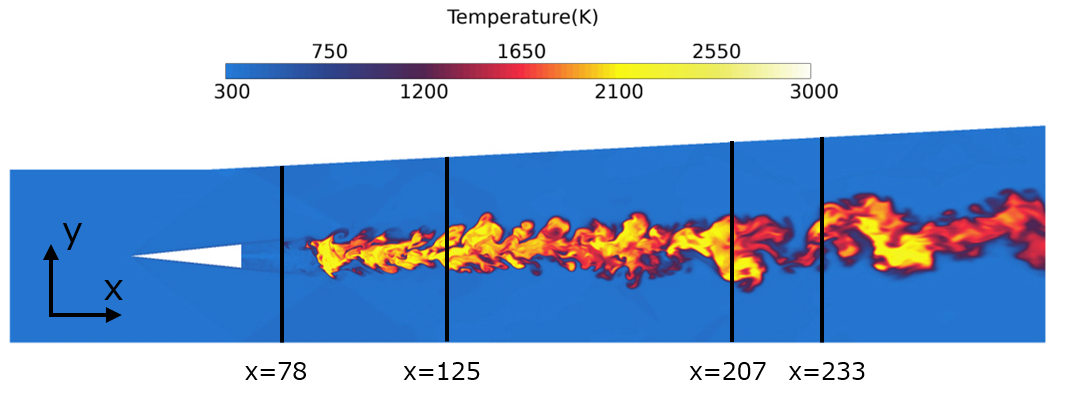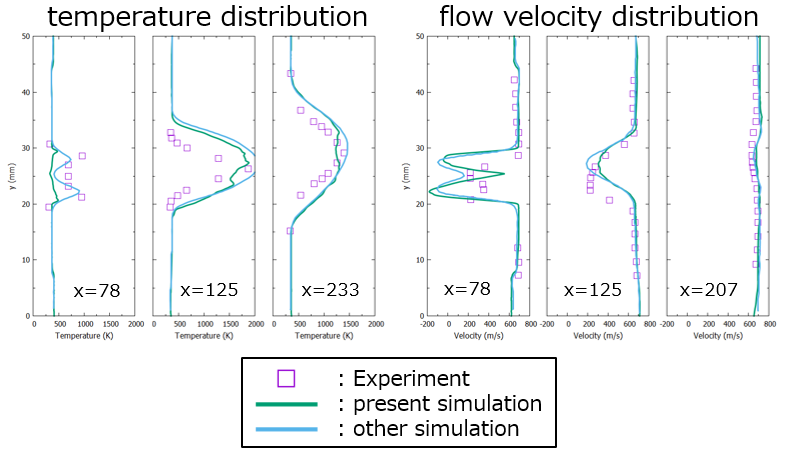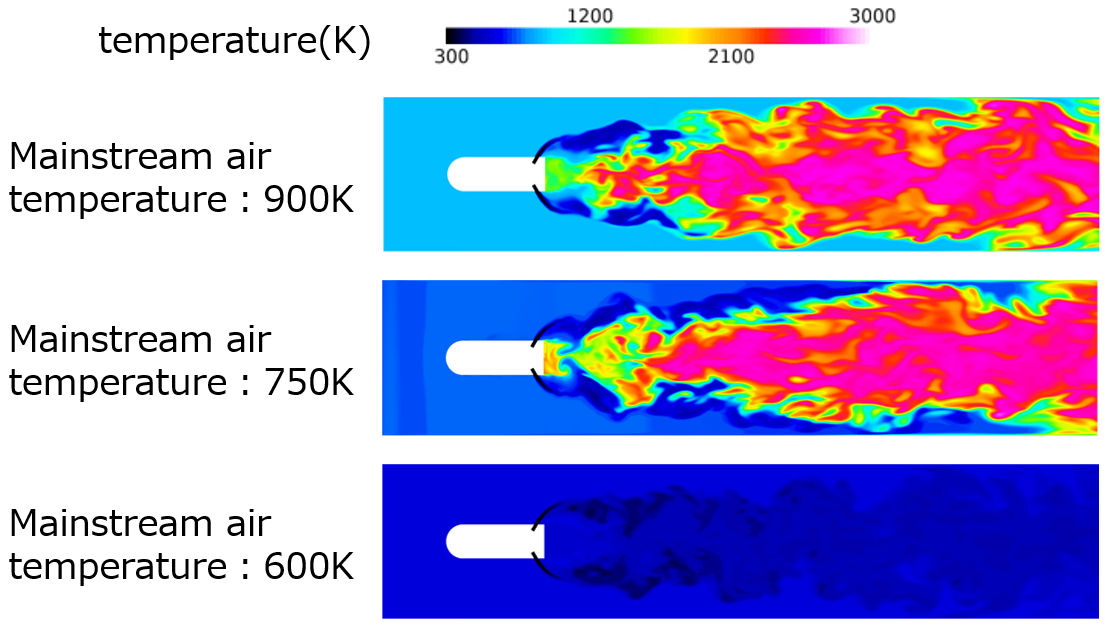Study on calculation method for chemical reactions in turbulent combustion
JAXA Supercomputer System Annual Report April 2018-March 2019
Report Number: R18ETET25
Subject Category: Skills Acquisition System
- Responsible Representative: Takashi Aoyama, Aeronautical Technology Directorate, Numerical Simulation Research Unit
- Contact Information: Yusuke Komatsu(ksw.koma2@asagi.waseda.jp)
- Members: Yusuke Komatsu
Abstract
Japan Aerospace Exploration Agency (JAXA) has been promoting research and development to establish hypersonic aircrafts which can cruise at Mach 5. High-Mach Integrated Control Experiment (HIMICO), which is a flight experiment under hypersonic conditions using the S-520 sounding rocket, has been planned in the first stage. Up to the present time, the supersonic wind tunnel tests and the combustion tests of the engine have been conducted. Then, it has been confirmed that the fuel self-ignites under certain experimental conditions in the combustion tests. However, the quantitative evaluation of the self-ignition condition and the data necessary for the performance evaluation of the engine are insufficient. Therefore, CFD analysis is used to interpolate the experimental data and to clarify the condition for self-ignition of the fuel.
Reference URL
N/A
Reasons for using JSS2
When numerical simulation including chemical reactions is performed on the actual combustor scale, the calculation cost becomes very large. Therefore, in order to perform numerical simulation within a reasonable time, we used JSS 2 which can parallelize.
Achievements of the Year
We developed a reacting flow solver with detailed chemical kinetics by implementing species transport equations and Arrhenius equation in the CFD solver FaSTAR developed by JAXA. A verification calculation of this solver was conducted on the scram combustor of DLR(Deutsches Zentrum fur Luft- und Raumfahrt).The temperature distribution and flow velocity distribution obtained as a result of the CFD analysis were almost quantitatively consistent with the experimental data(Fig.1, 2). In addition, as a result of CFD analysis for the ram combustor of High-Mach Control Experiment(HIMICO), it was confirmed that there was a difference between the case where the self-ignition occured and the case where the self-ignition did not occur due to the difference of the mainstream air temperature(Fig. 3).
Publications
N/A
Usage of JSS2
Computational Information
- Process Parallelization Methods: MPI
- Thread Parallelization Methods: N/A
- Number of Processes: 256 – 1024
- Elapsed Time per Case: 400 Hour(s)
Resources Used
Fraction of Usage in Total Resources*1(%): 0.79
Details
Please refer to System Configuration of JSS2 for the system configuration and major specifications of JSS2.
| System Name | Amount of Core Time(core x hours) | Fraction of Usage*2(%) |
|---|---|---|
| SORA-MA | 7,228,258.25 | 0.88 |
| SORA-PP | 13,694.94 | 0.11 |
| SORA-LM | 1,663.04 | 0.78 |
| SORA-TPP | 0.00 | 0.00 |
| File System Name | Storage Assigned(GiB) | Fraction of Usage*2(%) |
|---|---|---|
| /home | 476.84 | 0.49 |
| /data | 9,765.63 | 0.17 |
| /ltmp | 1,953.13 | 0.17 |
| Archiver Name | Storage Used(TiB) | Fraction of Usage*2(%) |
|---|---|---|
| J-SPACE | 0.00 | 0.00 |
*1: Fraction of Usage in Total Resources: Weighted average of three resource types (Computing, File System, and Archiver).
*2: Fraction of Usage:Percentage of usage relative to each resource used in one year.
JAXA Supercomputer System Annual Report April 2018-March 2019





